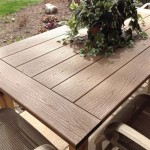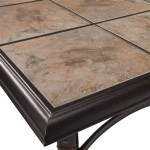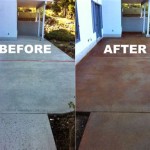How to Cover Patio Concrete: A Comprehensive Guide
Transforming an existing concrete patio into a more inviting and aesthetically pleasing outdoor space is an undertaking that many homeowners consider. Covering concrete patios with various materials offers a range of benefits, including enhanced aesthetics, improved comfort underfoot, reduced heat absorption, and increased safety, especially around pools and other water features.
If you're considering covering your concrete patio, careful planning and selecting the most suitable materials for your specific needs and preferences are essential. Here's a comprehensive guide to help you navigate the process:
1. Determine Your Goals and Budget
Before embarking on any patio covering project, clearly define your goals. Consider what you envision for the finished product and how you intend to use the space. Whether you prioritize aesthetics, comfort, or functionality, your goals will influence the materials you select and the overall design.
Additionally, establish a budget that aligns with your goals. Patio covering materials and installation costs can vary significantly, so it's crucial to set realistic financial expectations.
2. Explore Material Options
Numerous materials are available for covering concrete patios, each with unique characteristics and advantages. Here are some popular choices:
- Porcelain or Ceramic Tile: Durable, easy to clean, and available in a wide range of styles and colors.
- Natural Stone: Adds a touch of elegance and natural beauty, but can be more expensive and require sealing.
- Pavers: Interlocking concrete or clay units that offer durability and design flexibility.
- Decking: Provides a warm and inviting feel underfoot, but requires regular maintenance.
- Artificial Grass: Low-maintenance and pet-friendly, but not as durable as other options.
3. Prepare the Concrete Surface
Properly preparing the concrete surface is crucial for ensuring the longevity and stability of your patio covering. Thoroughly clean the concrete to remove any dirt or debris. If the concrete is uneven or damaged, it may need to be leveled or repaired before applying the new covering.
4. Install Drainage System (Optional)
If desired, installing a drainage system beneath the patio covering can help prevent water accumulation and potential damage to the concrete. A perforated drainpipe or gravel base can effectively channel water away from the patio.
5. Apply the Covering Material
Following the manufacturer's instructions, apply the chosen covering material to the prepared concrete surface. This step may involve using thin-set mortar, adhesive, or mechanical fasteners, depending on the material.
6. Seal and Maintain
Once the patio covering is installed, applying a sealant can enhance its durability and protect it from the elements. Regular maintenance, such as cleaning and resealing, will help preserve the appearance and longevity of your patio covering.
Conclusion
Covering a concrete patio can significantly enhance its aesthetics and functionality. By carefully considering your goals, exploring material options, preparing the surface, and following proper installation techniques, you can create a beautiful and inviting outdoor space that will provide years of enjoyment.

Diy Turning A Concrete Slab Into Covered Deck Catz In The Kitchen

Diy Turning A Concrete Slab Into Covered Deck Catz In The Kitchen

Easy Concrete Patio Coverup Ideas The Garden Glove

Diy Turning A Concrete Slab Into Covered Deck Catz In The Kitchen

Diy Turning A Concrete Slab Into Covered Deck Catz In The Kitchen

Resurfacing A Concrete Patio For Budget Diy Makeover Fab Everyday

Diy Turning A Concrete Slab Into Covered Deck Catz In The Kitchen

3 Concrete Resurfacing Options For Patio

Katy Patio Cover With Stamped Concrete Tradition Outdoor Living

New Deck Reveal Our Patio Transformation Is Complete For Now Concrete Covered Ideas On A Budget Over








